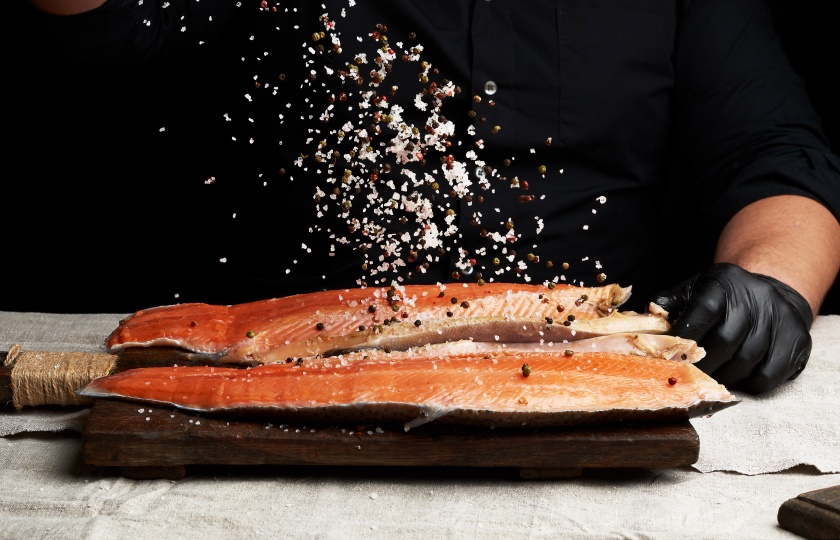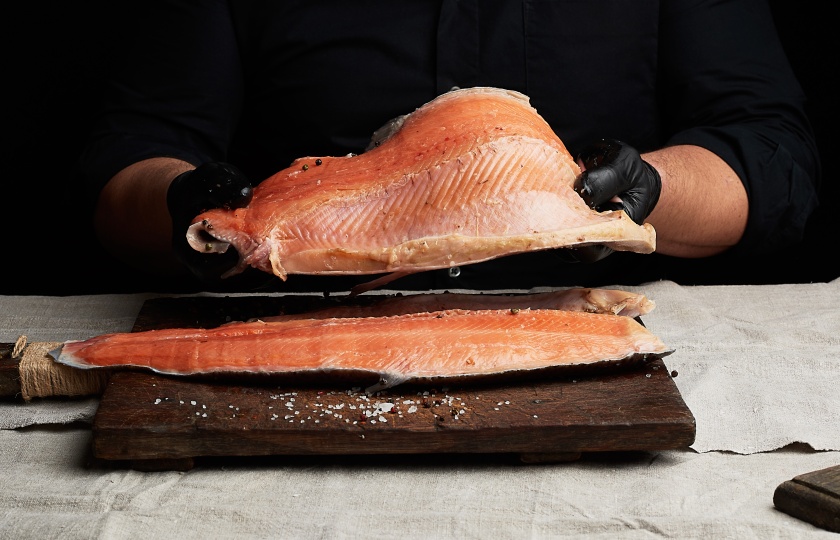Can You Freeze Smoked Salmon? The Definitive Answer

You might have a surplus of smoked salmon at home and wonder whether it can be frozen. Today, let’s explore this topic together!
Can You Freeze Smoked Salmon?
Yes, you can freeze smoked salmon.
Smoked salmon is made from fresh salmon, and its rich flavor allows it to be frozen for preservation. Freezing helps inhibit the growth of bacteria and microorganisms, thereby extending the shelf life of the salmon. However, before freezing, be sure to wrap the smoked salmon well in plastic wrap or a freezer bag, removing as much air as possible. When stored at temperatures around -18°C (0°F), it can last for several months.
Why Can't You Freeze Smoked Salmon?
There’s no rule that says you can’t freeze smoked salmon, but there are a few reasons why freezing it may not be ideal:

Texture Deterioration: Smoked salmon has a strong, smoky flavor. After freezing, the salmon will form ice crystals, which cause the cells to break apart. This results in a loose, mushy texture, losing the firm bite that fresh smoked salmon offers.
Flavor Loss: Freezing smoked salmon can cause it to lose some of its distinct smokiness. The moisture released during freezing can dilute the smoke flavor, making it less intense than when it’s fresh.
How Long Does Smoked Salmon Last in the Refrigerator?
The shelf life depends on how it’s stored.
Refrigerator Storage: If wrapped properly in a sealed bag or plastic wrap, smoked salmon can last around 7-10 days in the fridge at low temperatures. However, if it’s already been cooked, it’s best to eat it within 3 days to avoid bacterial or microbial growth.
Freezer Storage: For long-term storage, you can vacuum-seal the salmon or use a sealed bag, ensuring you remove as much air as possible. In a freezer at temperatures below -18°C (0°F), cold-smoked salmon can last for 2-3 months, while cooked smoked salmon should be consumed within 1-2 weeks.
Tip:
Vacuum Packaging: To retain the best flavor, vacuum-sealing the smoked salmon is recommended. This can effectively extend its shelf life by reducing oxidation and moisture loss.
Avoid Refreezing: Do not freeze and thaw smoked salmon repeatedly, as this will affect its taste and texture.
Check Before Eating: Before consuming, always inspect the smoked salmon for any signs of spoilage, such as off smells or color changes.
How Can You Tell if Smoked Salmon Has Gone Bad?
You can check for spoilage in the following ways:
Visual Inspection: Fresh smoked salmon should have an even smoky color with a dry surface and no slimy texture. If it appears grayish-white, blue-green, or any unusual color, and has a slimy coating, it’s likely gone bad.

Smell: Good smoked salmon should have a strong smoky aroma with hints of the ocean. If it has a strong fishy, ammonia-like, or rotten smell, it’s no longer safe to eat.
Texture: Gently press on the fish with your hand. Fresh smoked salmon should be firm and elastic, while spoiled salmon will feel soft and sticky.
Packaging and Storage: When buying smoked salmon, always check the expiration date. Fresh smoked salmon should be consumed within 3 days if refrigerated, while frozen smoked salmon can last 2-3 months.
Can I Eat Smoked Salmon 2 Weeks After Use - by Date?
No, you should not eat it.
Smoked salmon within its expiration date is safe to eat, but once past that, it’s no longer guaranteed to be safe. After the expiration date, harmful bacteria, such as Listeria, could develop, posing a risk to your health. Consuming expired smoked salmon can lead to digestive issues like abdominal pain, diarrhea, and other symptoms that affect your health.
Spoiled smoked salmon usually shows these signs:
Slimy surface or mold spots.
Unpleasant odors, such as sourness or rot.
Soft, mushy texture.
How to Defrost Frozen Smoked Salmon?
Refrigerator Thawing (Golden Standard):
Vacuum-pack the salmon and transfer it to the coldest part of the fridge (0-2°C / 32-36°F) 24 hours before you plan to use it.
Place the fish on a mesh tray so that any dripping liquids don’t reabsorb into the fish (this helps preserve 30% more moisture).
When it reaches -2°C (28°F), open the packaging and gently wipe away any remaining ice crystals.

Saltwater Bath (Emergency Thawing):
Soak the fish in a 4°C (39°F) saltwater bath (3% salinity) for 20 minutes to mimic the ocean environment and bring out the fresh flavors.
Alternatively, place the sealed bag in an ice-water mixture (water:ice = 1:2) and change the water every hour.
Low-Temperature Aging (Premium Method):
Thaw the salmon in a temperature-controlled cabinet at -3°C (27°F) for 12 hours. This allows the muscle fibers to relax slowly, reducing cell damage by 50%.
After thawing, expose the fish to UV-C light for 30 seconds to kill surface bacteria like Listeria.























